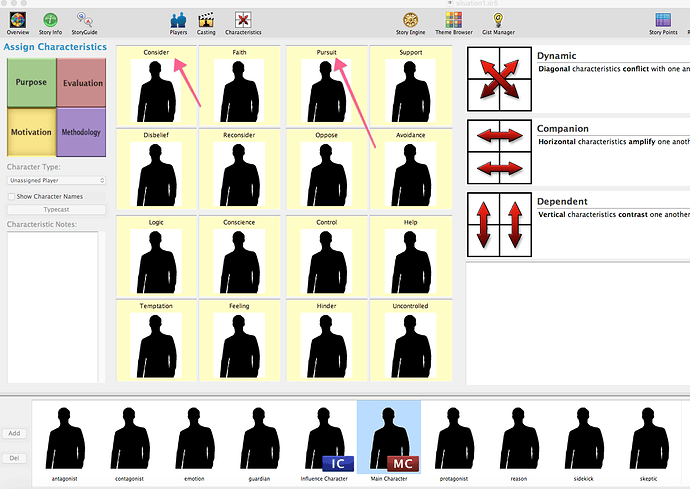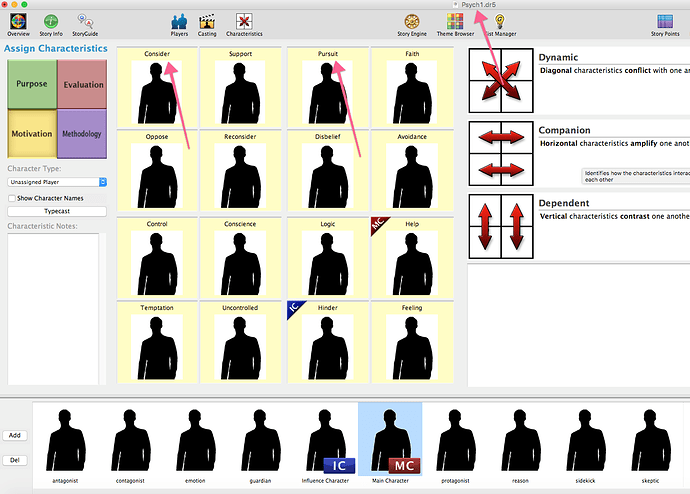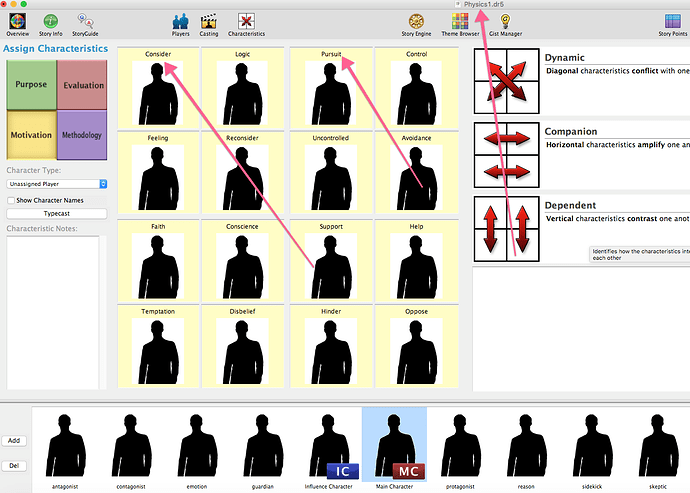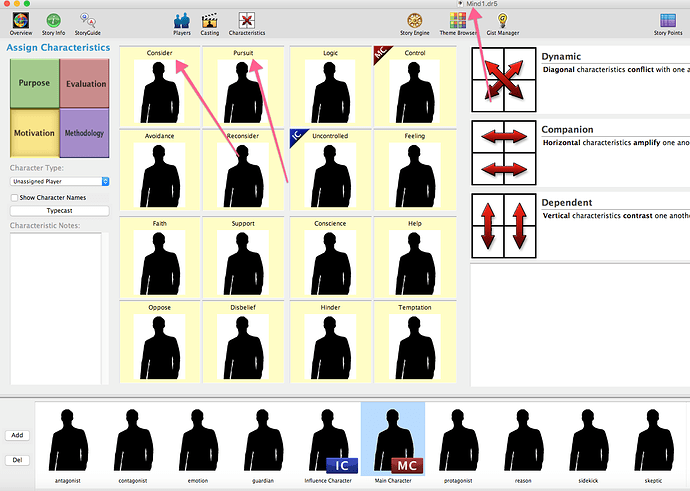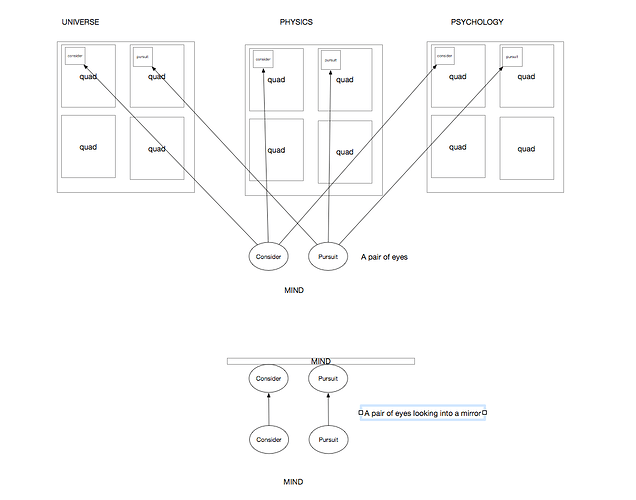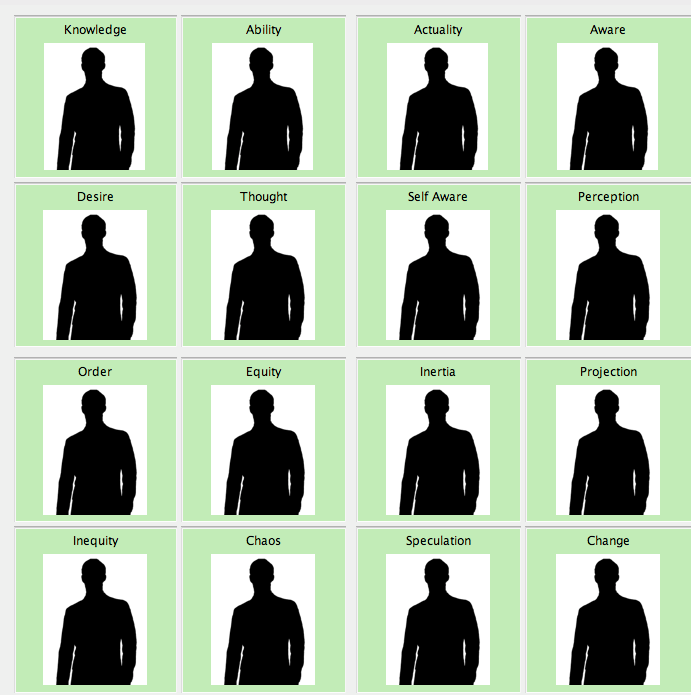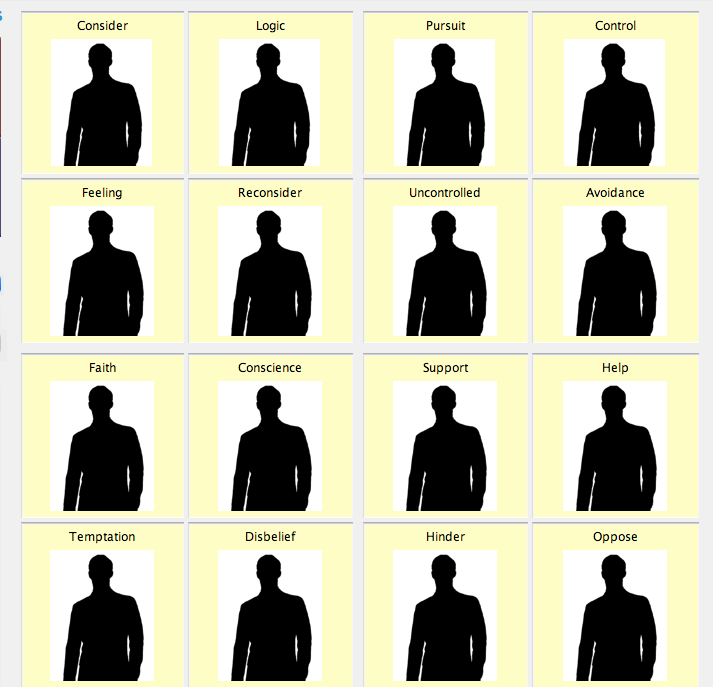From Chapter 9: DRAMATICA’S WANKY ARCHETYPES in Inside the Clockwork:
“You’ll notice that the good ol’ original eight Archetypes work fine in Universe, Physics and Psychology but not in Mind. If you try to create them in Mind, the Elements of, say, the Protagonist (Pursuit and Consider) are in the same quad!”
What does Melanie mean? Try it yourself. Here’s the characteristics page from a storyform where the Overall Story is Universe:
here’s a storyform where there the Overall Story is Psychology.
here’s a storyform where the overall story is Physics.
and now finally Mind:
What the hell? They’re in the same quad.
Theme browser seems still to be correct, same storyform:
(Notice this quad is NOT on the Past,Present,Progress,Future line, and all the other ones I present here are.)
Does that mean something? Yeah, it means, as Melanie says in the chapter, the archetypes arrangement DOES NOT WORK when Mind is chosen as Overall Story. Why? Because Dramatica needs perspective for it’s equations to work, and in the case of the storyware they chose Mind to be the perspective from which they looked at the characteristics. Think of it this way:
“When seen from this perspective, Motivations are the most clearly seen dimension of the character. so the 8 Original Archetypes work in three out of four classes. And if seen as Motivation characters, then you can see their Evaluations, Purposes and Methodology. BUT IF YOU SHIFT your point of view of the Characters and see them as Evaluation Characters (rather than Motivation character who has Evaluations), the patterns fall apart). … When you get all the way across the lake to Purposes (the farthest thing from Motivations) then the patterns go completely haywire.”
Note also that as far as the Archetypes go, the four Characterization Quads are NOT equal. Motivation is really the only one where you’ll get the results you want. For the same reason as with Classes, perspective, Motivation is more accurate than either Evaluations or Methods, and things REALLY don’t work with you look at Purposes.
So when you look at the theme browser, easy to see the Motivation quad, right?
Sucker lines right up. Let’s see, what about Methodology…?
In this case, that lined up too.
And now, Evaluation?
hmm, again seems to okay, unless the Theme Browser itself is distorting things. Anyone else have thoughts on this?
and finally, the maligned Purpose quad:
Hmm seemed to be okay.
Hmm.
Taking a look at the storyform where Activity is the Overall Story, here are the Purpose Quads:
okay, here we go: you can see how in this case, the quads in Purpose Characteristics are not aligned in the theme browser.
This doesn’t mean it’s broken, just means it’s making perspectival arrangments that you should, in this case, ignore. You need to design your character’s purposes, evaluations and methods according to story elements. Armando makes some great recommendation for how to do this, as does the Dramatica Theory book, and I expect @jhull has some ideas about this too. 
So here’s a question: does this mean that when Characteristics Quad disagrees with theme browser quad, theme browser wins? Sure seems like it.
Also…did you notice that all the Characteristics Quads are on the Time aligned throughline…? Is that the software or the theory, or me not understanding something?

